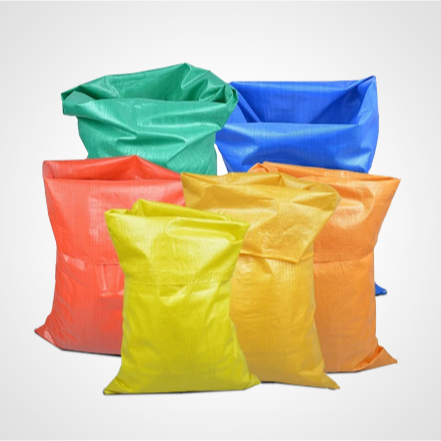In the ongoing global push towards sustainable practices, packaging plays a crucial role. While plastics have long been scrutinized for their environmental impact, some innovations in plastic-based materials offer more eco-friendly solutions. HDPE woven bags (High-Density Polyethylene) are one such product that balances durability and sustainability, making them an excellent choice for both businesses and environmentally conscious consumers. Let’s explore how HDPE woven bags contribute to sustainability.
1. Durability Reduces Waste
One of the key sustainability advantages of HDPE woven bags is their durability. These bags are designed to withstand heavy loads and prolonged use, meaning they last much longer than single-use plastic bags. Because they are reusable, fewer bags are required over time, which significantly reduces waste generation.
2. Recyclability and Reusability
HDPE woven bags are fully recyclable, and their materials can be repurposed multiple times without losing strength or integrity. By recycling these bags, businesses and consumers can help minimize the use of virgin plastic materials, thus reducing the overall environmental footprint. Furthermore, HDPE bags are highly reusable. Their sturdy design makes them ideal for multiple uses, which lessens the need for disposable alternatives.
3. Energy-Efficient Manufacturing
Compared to other materials, the production of HDPE woven bags consumes less energy. HDPE is manufactured using efficient processes that have a lower carbon footprint than other materials, such as paper. Additionally, advancements in the manufacturing process have made it possible to produce HDPE bags using fewer resources, further reducing environmental impact.
4. Reduction of Single-Use Plastics
One of the biggest environmental challenges we face today is the overuse of single-use plastics, which contribute to landfill waste and ocean pollution. HDPE woven bags provide a durable alternative to traditional plastic bags, helping to reduce the prevalence of single-use plastics. By opting for HDPE bags, businesses and consumers contribute to lowering plastic waste in landfills and the environment.
5. Lightweight and Transport Efficiency
HDPE woven bags are incredibly lightweight, which makes them more energy-efficient to transport compared to bulkier packaging materials like cardboard or jute. This reduction in transportation weight leads to lower fuel consumption, thereby reducing greenhouse gas emissions associated with shipping.
6. Applications Across Industries
HDPE woven bags are versatile and are widely used in industries such as agriculture, construction, and retail. Their strength makes them ideal for packaging goods like grains, fertilizers, chemicals, and even food products. Since these bags can hold heavy or bulky items without breaking down, they reduce the need for additional packaging materials, leading to less environmental waste overall.
7. Environmental Awareness Among Manufacturers
Many manufacturers of HDPE woven bags are now incorporating environmentally friendly practices into their production cycles. This includes using recycled materials, minimizing waste during production, and adopting energy-efficient technologies. Some manufacturers are even exploring biodegradable options for these bags, further pushing the boundaries of sustainable packaging solutions.
8. Economic Benefits of Sustainability
Beyond the environmental advantages, HDPE woven bags also offer economic benefits for businesses looking to adopt more sustainable practices. Due to their durability and reusability, businesses save costs on packaging materials over time. Additionally, aligning with sustainability goals can enhance brand reputation, attracting environmentally conscious customers and building long-term loyalty.
Conclusion
While HDPE woven bags are made from plastic, their long-term reusability, recyclability, and energy-efficient production make them a sustainable packaging option. By offering a strong alternative to single-use plastic bags and helping reduce overall waste, HDPE woven bags contribute significantly to a greener future. With ongoing innovations in materials and manufacturing processes, these bags represent a step forward in the quest for environmentally responsible packaging.
